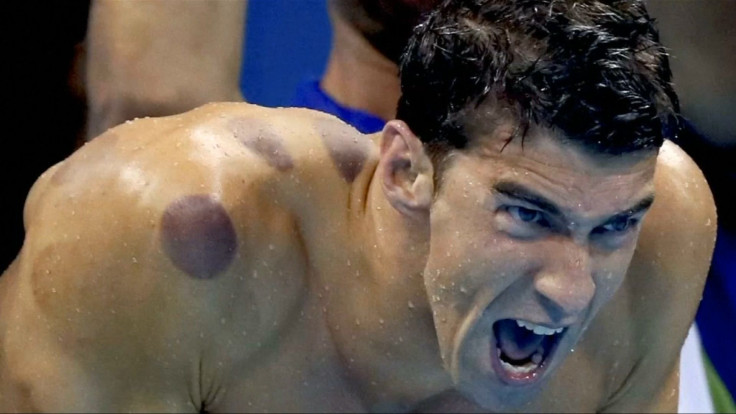Video Shows Man Using Animal Horns To Perform Cupping Therapy

You don’t need glassware to use cupping therapy -- the controversial practice from Asia that allegedly reduces pain and improves circulation — because buffalo horns will do just fine.
Cupping relies on suction to adhere something hollow, usually heated glass cups, to the body, often on the back. But video and photos have emerged of a man in Jakarta, Indonesia, using buffalo horns instead of those common glass cups. Performing the therapy on the street, the man uses fire to burn up any air inside each horn before immediately sticking it to another man’s back, sides, chest and neck.
When all the buffalo horns are in place, it gives the patient the look of a mythical armored creature.
Toward the end of the video, the man performing the therapy removes the horns from his patient’s back, showing that they are leaving behind circular, purple-colored marks.
Cupping became popular in the United States after swimmer Michael Phelps was spotted at the 2016 Olympics in Rio de Janeiro with dark, circular marks from the therapy all over him.
Some say that using cupping on an athlete’s sore muscles can relieve pain.
American celebrities have tried the therapy, including actresses Gwyneth Paltrow, Kaley Cuoco and Jennifer Aniston. Cuoco, who stars on the show “Big Bang Theory,” previously posted photos of her back post-cupping on Instagram.
“I jumped on the cupping bandwagon and I liked it,” her caption read.
Experts are divided over whether the ancient therapy produces actual results.
“An athlete can benefit from cupping because it moves blood stagnation in the muscle layer,” one licensed acupuncturist, Erica Weber, said. “When there’s blood stagnation, it causes range of motion issues, inflammation, so this helps bring it to the surface of the skin, so free flow of blood can move through the muscles and help move muscles more freely.”

Still, there is no conclusive medical evidence that the practice is effective.
And animal horns represent a different complication.
The British Cupping Society, for example, says that it “does not endorse their use, owing to risk of infection, and cross contamination.” That goes for any animal horn, not just those from buffalo.
However, the society also warns against using glass cups, which are one of the most commonly used objects in cupping. The group lists risk of infection and burns in using glass cups as well as their expense.
Other types of materials commonly used to make the cups utilized in cupping therapy include bamboo, ceramic, plastic and silicone.
According to the cupping society, cups should be left on for between three and six minutes, and they should be removed if the “skin turns blue, when there is blistering or tearing of the skin, or when there is excessive bleeding.”
The Daily Mail reported that cupping has roots more than 3,500 years ago, and the ancient Egyptians used the treatment. Back in ancient times, animal horns were more widely used, before bamboo and then glass cups replaced the horns.
© Copyright IBTimes 2024. All rights reserved.











